#Fr. Patrick Briscoe
Explore tagged Tumblr posts
Text
“True happiness is not the absence of pain but the presence of purpose.”
-Father Patrick Briscoe, OP, reflections on Saint on Joan of Arc’s feast day
23 notes
·
View notes
Text

Icon of Saint Patrick, from Mull Monastery.
Christ be beside me, Christ be before me; Christ be behind me, King of my heart; Christ be be within me, Christ be below me, Christ be above me, never to part.
Christ on my right hand, Christ on my left hand; Christ all around me, Shield in the strife; Christ in my sleeping, Christ in my sitting, Christ in my rising, Light of my life.
from a translation and adaptation of the Lorica of Saint Patrick, attributed to the eponymous saint, by Fr. James Quinn, S.J.
The whole of Christian life, and especially in Lent in a heightened way, is about this conformity to Christ; and we certainly see that in many places in the life of Saint Patrick, where he's become an alter Christus, another Christ, someone who is such an image of Jesus.
Fr. Patrick Briscoe, O.P. (The Beauty of Saint Patrick's Breastplate)
#Christianity#Catholicism#Celtic Catholicism#Saint Patrick#Jesus Christ#Imitatio Dei#Lent#prayers#hymn#icon
10 notes
·
View notes
Text
The 2007 edition of the Indy 500 soundtrack. Some absolute tunes in this one. Enjoy :)
Helio Castroneves (Car 3) - Avril Lavigne - Girlfriend
Tony Kanaan (Car 11) - Carrie Underwood - Before He Cheats
Dario Franchitti (Car 27) - Beyonce & Shakira - Beautiful Liar
Scott Dixon (Car 9) - Akon - Don't Matter
Sam Hornish Jr (Car 6) - Bone Thugs-N-Harmony ft Akon - I Tried
Dan Wheldon (Car 10) - Pink - U & Ur Hand
Ryan Briscoe (Car 12) - Gwen Stefani ft Akon - The Sweet Escape
Danica Patrick (Car 7) - Huey - Pop, Lock & Drop It
Marco Andretti (Car 26) - Baby Boy Da Prince ft Lil Boosie - The Way I Live
Tomas Scheckter (Car 2) - Maroon 5 - Makes Me Wonder
Michael Andretti (Car 39) - Bon Jovi - (You Want To) Make A Memory
Scott Sharp (Car 8) - Fergie ft Ludacris - Glamorous
Jeff Simmons (Car 17) - Lloyd - Get It Shawty
Ed Carpenter (Car 20) - Daughtry - It's Not Over
Darren Manning (Car 14) - Justin Timberlake - Summer Love
Buddy Rice (Car 15) - Kelly Clarkson - Never Again
Kosuke Matsuura (Car 55) - Carrie Underwood - Wasted
AJ Foyt IV (Car 22) - Bow Wow ft T-Pain & Johnta Austin - Outta My System
Vitor Meira (Car 4) - Timabland ft Nelly Furtado & Justin Timberlake - Give It To Me
Davey Hamilton (Car 02) - 50 Cent - Straight To The Bank
Sarah Fisher (Car 5) - Ne-Yo - Because Of You
Buddy Lazier (Car 99) - Nelly Furtado - All Good Things (Come To An End)
Roger Yasukawa (Car 24) - Fall Out Boy - Thnks Fr Th Mmrs
John Andretti (Car 33) - Unk - 2 Step
Al Unser Jr (Car 50) - Unk - Walk It Out
Alex Barron (Car 98) - Beyonce - Get Me Bodied
John Herb (Car 19) - Ciara - Like A Boy
Jaques Lazier (Car 21) - Gym Class Heroes ft Patrick Stump - Cupid's Chokehold
Milka Duno (Car 23) - Linkin Park - What I've Done
Marty Roth (Car 25) - Mims - This Is Why I'm Hot
Roberto Moreno (Car 77) - Yung Berg ft Junior - Sexy Lady
Richie Hearn (Car 91) - Mims - Like This
Phil Giebler (Car 31) - The Red Jumpsuit Apparatus - Face Down
All added to this playlist :)
#helio castroneves#tony kanaan#dario franchitti#scott dixon#sam hornish jr#dan wheldon#ryan briscoe#danica patrick#marco andretti#ed carpenter#buddy rice#sarah fisher#indycar#indy 500#indy 500 2007#music#tunes#spotify#indy 500 soundtrack
3 notes
·
View notes
Text

What The Two Healings Of Today’s Gospel Teach Us About Our Own Faith - Mk 5:21-43 or 5:21-24, 35b-43 (6/27/2021 - Roman Catholic)
Jairus' daughter and the woman with a hemorrhage stand as a diptych, teaching us how to believe.
Diptychs, that is, two panels joined by a hinge, were a popular form of art in the middle ages. The two images could be closed and protected, making it possible to travel with them. Furthermore, the two panels support each other. Rather than resting alone upright, the joined panels make it possible to easily display the diptych, offering a little resilience and structural security. Finally, according to the plans of the artist or benefactor, the images on each panel were designed to be complementary, speaking to each other.
Today’s Gospel presents a diptych, two examples of professing faith. Joined by the hinge of faith, Jairus and the woman cured of a hemorrhage, embody the two facades of the one united act of faith. These two examples of faith are complementary, each illuminating the other. Like a diptych, the two corresponding figures are a set, a pair.
Jairus, the synagogue official
What do we know about Jairus? What can we surmise from how Mark’s account presents him? Jairus, an official of the synagogue, would have been a man of some standing in his community. Many of the healing accounts in the Gospels are anonymous, like the woman cured of a hemorrhage. Jairus, on the other hand, is known and named. He must have been a recognized figure, or perhaps someone who continued to testify to Jesus, if his name would have been important to the evangelist and the early Christian community.
However, Jairus’ status raises several questions. Was he ridiculed by his peers for approaching Christ? Did his profession of faith cost him his leadership role in the synagogue? Did he pay a price socially, with his new faith in Christ compromising his status in the town? It seems unlikely that such a decision would be without cost.
Jairus approaches the Lord
Notice that the Gospel carefully details how Jairus approaches Jesus. The Gospel states, “One of the synagogue officials, named Jairus, came forward. Seeing him he fell at his feet and pleaded earnestly with him, saying, ‘My daughter is at the point of death. Please, come lay your hands on her that she may get well and live.’ He went off with him, and a large crowd followed him and pressed upon him” (Mark 5:22-24). Jairus approaches Jesus and honors him as a ruler, falling at the Lord’s feet. Then Jairus makes an argument, telling Jesus the situation at hand, and asking the Lord to respond. Finally, Jairus follows Jesus, hoping that the Lord will cure his daughter.
The faith of Jairus
Jairus’ interaction with Christ highlights the intellectual aspect of faith. Faith is believing, and believing something real. To profess the Christian faith means to assent with the mind to stated tenets of belief. Each Sunday when we profess the Creed, we name those core fundaments of the faith.
In his first papal encyclical, Lumen Fidei, Pope Francis writes, “Christ’s word, once heard, by virtue of its inner power at work in the heart of the Christian, becomes a response, a spoken word, a profession of faith. As Saint Paul puts it: ‘one believes with the heart … and confesses with the lips’ (Rom 10:10). Faith is not a private matter, a completely individualistic notion or a personal opinion: it comes from hearing, and it is meant to find expression in words and to be proclaimed.” Jairus has thought through what he wants to ask of Christ. He knows that Jesus heals, and presents a course of action, a plan. Prostrating himself before Jesus, he states the needs of his heart and professes his belief that by the laying on of hands his daughter will be saved.
The woman with a hemorrhage
Unlike Jairus, a respected and known figure, the woman suffering from a flow of blood was an outcast. According to Jewish ritual law, the flow of blood made her unclean. Moreover, anything and anyone she touched was made unclean. Unlike Jairus, who boldly plants himself in front of Christ and names his requests of the Lord, this woman shyly, humbly approaches Christ from behind. At wits end, having long suffered at the hands of doctors unable to cure her, she reaches out to Christ, in hopes that he will be able to do something.
The woman’s faith
While Jairus exemplifies the intellectual aspect of faith, that there are real things to be believed, this woman demonstrates the role of the will in the act of faith. She does not name terms with Christ or pronounce her desires. For her, it is the heart that leads. She stretches out her hand, driven by will, hoping against hope that Christ will cure her suffering. She chooses Christ, trying to touch just the hem of his garment.
To believe, the heart must assent! Pope Francis writes, “Faith transforms the whole person precisely to the extent that he or she becomes open to love. Through this blending of faith and love we come to see the kind of knowledge which faith entails, its power to convince and its ability to illumine our steps. Faith knows because it is tied to love, because love itself brings enlightenment.” Faith is not merely an intellectual enterprise. It is the twin process of the mind and heart. Faith is knowing, but an acceptance of that knowledge by having chosen.
The diptych
For 12 years this woman lived in darkness. Ceremonially unclean, she had not been able to enter the synagogue and offer worship. Unable to prepare food for her family or participate in the liturgical feasts at home, now she has been given her life back by Christ. Jairus had loved and delighted in his daughter for 12 years, his suffering was the risk of losing her. But the woman cured of a hemorrhage had spent her 12 years of pain, apart, alone. The act of will, the confidence in Christ, the movement from unbelief to belief that is a choice, gave her life and light.
Are we Jairus or the woman? Each believer is at once both. Like Jairus we fear loss and the risk of what we have. Like the woman cured of the flow of blood, we need relief from the present pains and sufferings we bear.
Furthermore, like Jairus, each believer assents with the mind. Arguing our way into faith, believing in the intellect that Christ will save. But like the woman, our intellectual assent occurs only because of the movement of the heart, an act of the will, a choice.
By: Fr. Patrick Briscoe, OP
9 notes
·
View notes
Text
6 Reasons to start Advent with a good confession
6 Reasons to start Advent with a good confession
fot. Robert Woźniak Fr. Patrick Briscoe, OP – 11/28/21 There’s really no reason to *not* start Advent with a good confession! 1. New Liturgical Year, New Start Advent opens the Church’s liturgical calendar. The First Sunday of Advent sets the cycle in motion, beginning a new year. Pope Benedict XVI writes, “The first Sunday of Advent, the Church begins a new Liturgical Year, a new journey of…
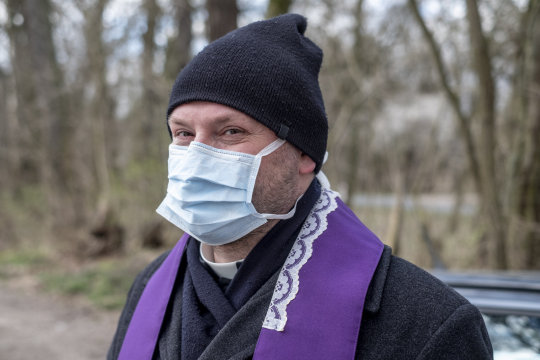
View On WordPress
0 notes
Text
Tweeted
“I want to spend my heaven doing good on earth.” Happy Feast! pic.twitter.com/b2p82769Ln
— Fr. Patrick Mary Briscoe, OP (@PatrickMaryOP) October 1, 2019
0 notes
Text
“So what does it mean to ask for something “in Jesus’ name”? Because let’s be honest: we’ve all experienced moments where it feels like our prayers go unanswered. But I don’t believe there’s such a thing as an unanswered prayer. Rather, there are prayers that don’t receive the answer we want. God hears them all.
Asking in Jesus’ name
To ask in Jesus’ name means more than just tagging his name at the end of a sentence. It means praying in union with his will, aligned with his mission and within the bounds of his providence. Let’s take a look at those three elements:
1. Is my prayer in union with Christ’s will? If I’m asking for something contrary to God’s will — no matter how strongly I desire it — then I’m not truly praying in his name. Authentic Christian prayer begins with surrender. I must conform my heart to Christ’s heart.
2. Is my prayer aligned with Christ’s mission? Jesus came for the salvation of souls and the building up of the Church. So I must ask: is what I’m praying for going to help others grow in faith, hope and love? Does it serve the good of others and glorify God?
3. Is my prayer in harmony with God’s providence? This means recognizing that some things I might ask for simply don’t fit within God’s plan — whether by nature, reason or the unfolding of grace. True prayer trusts that God’s providence is wiser and more loving than anything I could imagine.”
by Father Patrick Briscoe, OP
12 notes
·
View notes
Text
Finding hope on All Saints Day
Finding hope on All Saints Day
Fr. Patrick Briscoe, OP – 10/31/21 All the bad news cannot hamper the grace and mercy of Jesus Christ. Are your eyes open to see? Archbishop Jose Gomez of Los Angeles wrote this week, “There is a spiritual awakening going on in America, underneath all the controversy of our politics, the continued clouds of the pandemic, all the uncertainty about where our country is heading.” The archbishop’s…

View On WordPress
0 notes
Text
What 2 healings in the Gospel teach us about our faith
What 2 healings in the Gospel teach us about our faith
AM113 | Shutterstock Fr. Patrick Briscoe, OP – 06/27/21 / aleteia.org Jairus’ daughter and the woman with a hemorrhage stand as a diptych, teaching us how to believe. Diptychs, that is, two panels joined by a hinge, were a popular form of art in the middle ages. The two images could be closed and protected, making it possible to travel with them. Furthermore, the two panels support each other.…
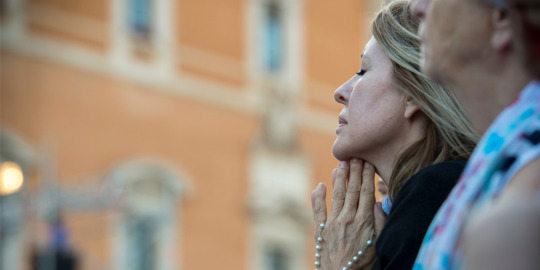
View On WordPress
0 notes
Text
4 Ways to understand God as Father
4 Ways to understand God as Father
pixabay Fr. Patrick Briscoe, OP – 06/20/21 / aleteia.org Unlike that of any earthly father, God’s goodness will never run out. Stop and reflect today on what it really means to call God “Father.” 1. God is creator In the Old Testament, Israel had a sense of God as father of a nation, father of their people. The prophet Jeremiah says, “I will lead them to streams of water, on a level road,…
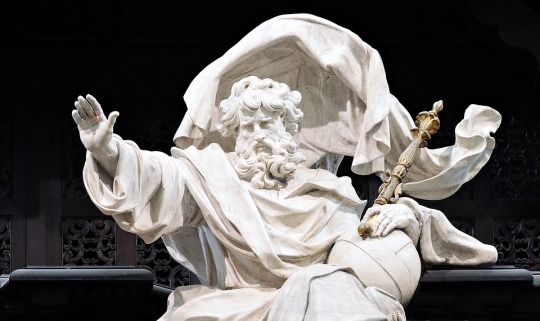
View On WordPress
0 notes
Text
Jesus’ righteous anger directed at those who’ve forgotten
Jesus’ righteous anger directed at those who’ve forgotten
Fr. Patrick Briscoe, OP – 03/07/21 / aleteia.org Let us cleanse the temples of our hearts … Remember, remember, remember. One of the greatest themes of the Old Testament is that God calls his beloved people, Israel, to remember his love. God’s providential care—which led Israel out of Egypt, cared for this people in the wilderness, and settled this nation in the promised land—is quickly and…
View On WordPress
0 notes
Text
5 Theological truths to see in the Transfigured Christ
5 Theological truths to see in the Transfigured Christ
Fr. Patrick Briscoe, OP -02/28/21 / aleteia.org Wipe away your tears this Sunday, cast out all sleep from your eyes. A theophany is a revelation of God to man, when God makes himself plainly known. As examples, we might think of Moses’ discovery of the burning bush or Paul’s encounter with God on the road to Damascus. The Transfiguration is one such event, when the disciples see the glory of…
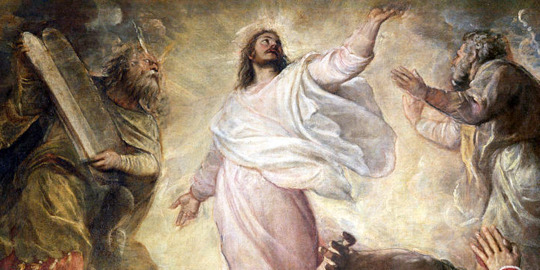
View On WordPress
0 notes
Text
3 Numbing Temptations In Our Times
3 Numbing Temptations In Our Times
Conley Historical | CC BY-SA 3.0 Fr. Patrick Briscoe, OP 02/27/20 – aleteia.org When we try to settle down in this life, as if it’s all there is, problems arise. The great English Dominican friar, Bede Jarrett, once gave a series of Lenten conferences based on the theme “Here we have no abiding city” (Hebrews 13:14). Jarrett explained, “If you are traveling, the whole secret of a happy journey…
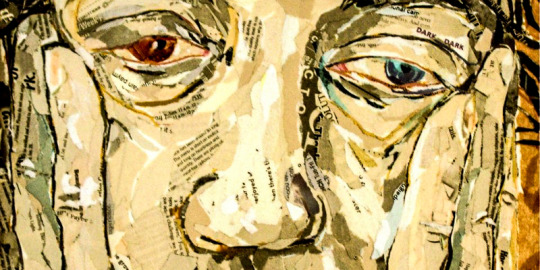
View On WordPress
0 notes
Text
Reasons Catholics should read the Bible
Reasons Catholics should read the Bible
poylock19 | Shutterstock Fr. Patrick Briscoe, OP – published on 01/15/21 / aleteia.org Even one of these six reasons should be enough to change our habits. One seminary professor of mine insisted as we began to study the Gospels that we sit down and read each Gospel straight through. It was a serious but reasonable request. Her point was that the narrative of the Scriptures would wash over us,…

View On WordPress
0 notes
Photo

Nativity: The birth of the Christ Child has to occur in the soul
In this month of the Rosary, take a moment to reflect on the Third Joyful Mystery.
Here in time we make holiday because the eternal birth which God the father bore and bears unceasingly in eternity is now born in time, in human nature. Saint Augustine says this birth is always happening. But if it does not happen in me, what does it profit me? What matters is that it shall happen in me. – Meister Eckhart
Jesus Christ is born! The eternal Word by which all things were made has entered creation. God speaks a new mystery: he has become like us in all things but sin. Through the Virgin Mary, the Mother of God, the Word Incarnate has taken flesh.
In those days a decree went out from Caesar Augustus that the whole world should be enrolled. This was the first enrollment, when Quirinius was governor of Syria. So all went to be enrolled, each to his own town. And Joseph too went up from Galilee from the town of Nazareth to Judea, to the city of David that is called Bethlehem, because he was of the house and family of David, to be enrolled with Mary, his betrothed, who was with child. While they were there, the time came for her to have her child, and she gave birth to her firstborn son. She wrapped him in swaddling clothes and laid him in a manger, because there was no room for them in the inn (Luke 2:1-7).
The King of Kings enters the world in poverty, reminding his every disciple that to be a follower of Jesus means to be a beggar. Helpless, a child who needed a mother to change and bathe him, our God enters into our human estate and transforms it by the grace of faith. To have faith is to become like a little child, looking always up to God above to care and sustain.
Pope Benedict XVI writes, “For you the Savior is born: through the Gospel and those who proclaim it, God now reminds us of the message that the Angel announced to the shepherds. It is a message that cannot leave us indifferent. If it is true, it changes everything.”
Like Meister Eckhart before him, Pope Benedict understands that the nativity of the Christ Child has to occur in the soul.
We must go, like shepherds, to see the Infant King, allowing his reign to change the very shape of our lives. St. Irenaeus puts it this way, “Our Lord Jesus Christ, the Word of God, of his boundless love became what we are, that he might make us what he himself is.”
God has become very close to us. We must respond, allowing this proximity to convert our souls. If he is born, my life must look like he has been born!
Many cannot see the King in the Infant. They would have preferred his birth to have been more noble, his reign to have been not in the hearts of the humble, but a more impressive conquest of the proud. And yet only the life and death of the simple Christ could change the very substance of our lives. Only the hope of Bethlehem, only the hope of Christmas, can transform our worn and weary world.
By: Fr. Patrick Briscoe, OP
From: https://www.pamphletstoinspire.com/
0 notes
Text
Being like mustard seeds is adding flavor to daily living
Being like mustard seeds is adding flavor to daily living
Vehement Romantic | CC BY 2.0 Fr. Patrick Briscoe, OP – 06/13/21 / aleteia.org/ The mustard seed can be interpreted as the Church, or even the disciples, or as Christ. These understandings help to illuminate the mystery of Jesus’ parable, and aids us in coming to know the Lord better. And yet there is a fourth possibility. Jesus, teaching his disciples, tells them that the Kingdom is like a…

View On WordPress
0 notes